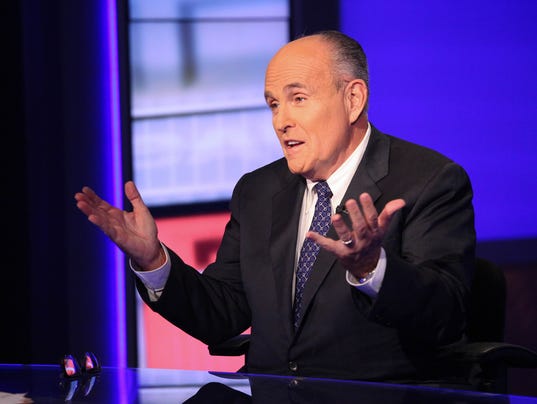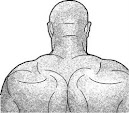
I would like to start this post by saying thank you to my African brothers and sisters, who hosted a
wonderful program with yours truly yesterday at a church
(no it didn't explode) in the Overbrook section of Philadelphia.
Getting knowledge is good. Bonding with the Diaspora is better.
Now for my post:
"In 1944,
Swedish sociologist Gunnar Myrdal, in his famous study
An American Dilemma, unpacked the hypocrisy of Jim Crow segregation in a society based on liberty and equality.
The new PBS documentary American Denial picks up this decades-old question and asks it again: how in the world can a country that claims to cherish freedom and fairness treat black people so terribly?
Using Myrdal's work as an entry point, director Llewellyn ("Llew") Smith and producers Christine Herbes-Sommers and Kelly Thomson offer a new answer that's based on a modern, research-grounded understanding of how oppression works. The film makes the case that everything from the racialized police-involved violence that has captured the country's attention in recent months, to educational inequalities, economic disparities, and the incarceration crisis all have a common root: unconscious racism, also known as
implicit bias. They pin the blame on a belief — so deeply entrenched that many of us aren't aware that we hold it — that white is better than black.
I had a conversation recently with Herbes-Sommers and Smith, who worked on the film for more than 5 years, about how the topic of unconscious racism has become even more timely since they began the project, and why it's so urgent that all Americans ask themselves two key questions: "Why do I think this?" and "What are the consequences"?
'Jenée Desmond-Harris: What was your inspiration for making this film?
CHS: When it comes to talking about race and bias generally, white people don't want to feel guilty anymore, and black people don't want to feel angry anymore. For us, [the goal] was, what is a way for us to begin to probe the question in a way that everyone could embrace, as both personal and political? We all have biases, but how can we look at those in a way that allows us to change the destructive outcomes of those biases?
LS: In terms of the nature of the film, we were also interested in using history as a way to begin to open up this conversation and a lens through which we could ask some very penetrating questions about how we create racial dynamics.
JDH: How does American Denial explain how implicit racial bias has influenced this country throughout history, and how it works today?
CHS: The narrative spine of the film is Gunnar Myrdal's 1,800-page, multivolume study on the Jim Crow South. He asks a very profound, very difficult question: how can a society that is so devoted to equality, justice, and equal opportunity both allow and enable a system of laws and practices that oppress a significant percentage of the population?
He alludes to idea that there is unconscious bias, but that's not what he identifies. Probably the best way we see unconscious bias in the film is through a test called the
Implicit Association Test, which was developed by Mahzarin R. Banaji of Harvard.
And probably the most poignant sections of the film are the black doll/white doll tests of Kenneth and Mamie Clarke [conducted during the 1940s] and a modern iteration of the test in which the results are the same. Young children five, four, six years old, are given two dolls — a black doll and white doll, and the interrogator ask which doll is the nice doll, the smart doll, the dumb doll, the ugly doll, the pretty doll, and the results are horrible: a third of black children are identifying the white dolls as smart, good, healthy, clean, and successful. But when it comes to the question "What doll are you?" the children don't want to identify themselves as bad, stupid, ugly, et cetera, but they're not white. We see this internalized conundrum and the results of historical biases and practices.
LS: What's interesting about that test is it gets to the question of implicit biases — that even people of color can have biases against themselves and that gets internalized because we're all subjected to the same kinds of biases that devalue black skin and black life compared to white skin and white life.
The kind of bias the
FBI Director James Corney is talking about when he's talking about police making assumptions about who's more likely to kill and who's not, that's not so different from the kind of bias that's being articulated in the doll study — in one place its being internalized and in one place its being executed in public action.
CHS: These biases are not neutral. They lead to arrests, stereotyping, mass incarceration ... whole communities are being eviscerated by these biases in practice.
JDH: You mentioned arrests and incarceration. What areas outside criminal justice are useful to explore when thinking about implicit bias?
CHS: In the film, we see an extension of implicit bias test into the realm of medicine. A group of doctors are asked how they would prescribe certain blood pressure medications, and there's a huge correlation — blood pressure medication is given much less to black men than to white men with the same symptoms, when everything else is equal.
Another place you see it is in employment and hiring. Legions of studies indicate that identical resumes are treated differently once race is identified. Virtually every realm of human endeavor in US is colored one way or the other by a racial dynamic.
LS: Other
research shows that black boys are viewed as older and less innocent than white boys [by teachers and police officers]. It's not that these people are consciously trying to do these things, but they're articulating what is in their unconscious and the unconscious associations they make
... but of course these teachers wouldn't describe themselves as racist, and we wouldn't say they are bad people. We're all drinking the same water, and we're getting the same messages. How these are being articulated in our life is a question we're not asking enough.
JDH: Do you think the film's focus on implicit bias and your emphasis that it's something that affects everyone takes the question of blame out of the equation and makes it easier, or more palatable, for viewers to become open to thinking about modern-day racial inequality?
LS: It's a conversation we haven't tried to have in that way. We keep trying to have these winner-take-all conversations, and we keep winding up in the same place. What we are trying to do [with the film] is invite the viewers into the film to think about this for an hour in a way that is not about apportioning blame. It's about how are we all victimized by the destructive ideas we've internalized ... and how that affects the institutions we depend on.
CHS: Rather than a conversation about blame, it's about collective individual responsibility — to invite viewers to look at themselves without fear, knowing that other people might be doing the same thing. It's a collective exercise in self-examination.
LS: Banaji acknowledges in the film that even when she takes her own test, she can't associate good with black as quickly as she associates good with white.
JDH: There are a lot of people who really resent any discussions of race and racism, and who become very defensive and insist that people who discuss race are creating an issue where there isn't one. Could confessions like Banaji's and those of the other experts in the film, and the emphasis that racial bias is something that affects all of us, be disarming to these types of viewers?
CHS: Overall, we tried to tell the story in a really gentle, inviting, complicated way. Black and white scholars are implicating themselves and each other in this imminently human project of cultivating biases and reevaluating them for their destructive consequences.
[This type of inquiry] always leads to the question, "Why do I think this?" Not just why is there a bias, but "Why don't I want to talk about this anymore?" You end up peeling back layers of resistance and denial — that's an extremely courageous process for human beings to engage in, and we hope that film invites viewers to do that.
LS: I keep thinking about the people who are afraid to have these kinds of conversations, and there's this feeling that if we don't talk about it, it might go away. But we have to talk about it because there are lives at stake. There are people dying in encounters with police. There are African-Americans locked away, in a society that incarcerates people at a higher rates than in any other society in the history of the world. There are real problems that we have to address going forward, and it would be wonderful if these tragedies would lead to a moment where we start to really address some of these issues in ways that we haven't.
"When was the last time you saw the words "implicit bias" come out of the mouth of an FBI director?"
CHS: And we think the moment may be closer upon us ... when was the last time you saw the words "implicit bias" come out of the mouth of an FBI director?
But our capacity for denial as individuals and a culture is rapacious — a lot of it is self-protective, but in the end a lot of the stuff that is self-protective is destructive to others and to society as a whole.
LS: One thing you could say to these people who say they're really sick of this is this is something to explore, even though you may not want to do it. Gently cajole people to actually take the [Implicit Association] test, and see how they feel when they get the results. You don't necessarily have to believe them, but it's something to think about.
JDH: What is the fundamental question the film is trying to get viewers to answer? Is it "Why do I think this?"
LS: It's that, and "Why do I do this?" And "What consequences does it have that these things are being thought by me, and that these thoughts are shared with people who are friends, strangers, and people in institutions we depend on for democracy and justice?"
CHS: Right. It starts with the "why" question and then next question is, "What are the consequences when it's not just me who feels it and acts on it? Because biases are nothing if they have no consequences. If they don't have consequences, then they're just personal opinions and preferences.
JDH: A lot of people think that biases are just harmless and personal.
CHS: But they're not. They're not at all.'"
[Source]
The field Negro enlightenment and education series continues.
Thank you for reading.
 He also reviewed statements from four witnesses at the scene, as well as other evidence." [Source]
He also reviewed statements from four witnesses at the scene, as well as other evidence." [Source] "White power". *In my best Clayton Bigsby voice*
"White power". *In my best Clayton Bigsby voice* Now, for the record, it’s unclear how many people were actually calling Giuliani’s words racist (most of the posts about Giuliani and racism today are in reaction to his newer comments). But nevertheless, when speaking with The New York Times yesterday, the former New York mayor completely dismissed the idea that anything he said was about race.
Now, for the record, it’s unclear how many people were actually calling Giuliani’s words racist (most of the posts about Giuliani and racism today are in reaction to his newer comments). But nevertheless, when speaking with The New York Times yesterday, the former New York mayor completely dismissed the idea that anything he said was about race.








